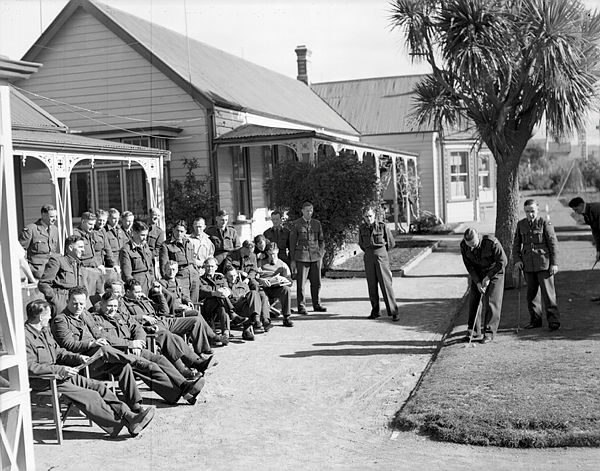Research
Research
Research
The Path to Bomber Command – Part 2
Following a successful application to join the RNZAF (see Part 1 – https://www.nzbombercommand.co.nz/the-path-to-bomber-command-part-1/), the next step for aspiring aircrew was awaiting for callup to the Initial Training Wing (ITW). Delays meant that some were taken over by the Army until the RNZAF, worried about losing good airmen, recalled them. Aerodrome defence units were formed to keep them away from the Army’s clutches.
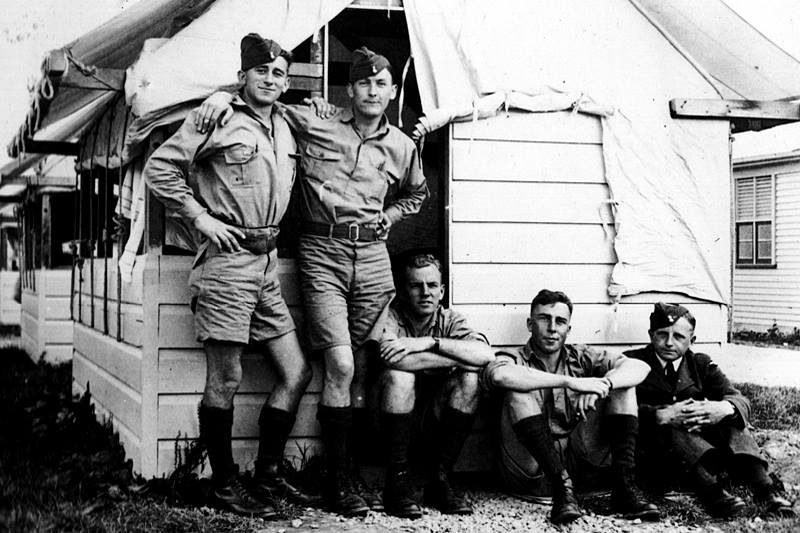
ITW Weraroa (Levin) 1941. Roy Angels (L) and mates outside one of the huts, note the canvas roof.
Angels went on to fly Wellingtons and was awarded the Legion of Honour.
(Credit: NZBCA Archive)
ITW was originally established at Rongotai, before being moved early in WWII to Weraroa, a government training farm / borstal site in Levin. Later again it was moved to Rotorua. Several other ITW’s were set up throughout the course of the war, including at Harewood, Taieri, Seagrove (South Auckland) and Omaka (near Blenheim) – the latter being established for airmen who had previously trained in the Air Training Corps system, so theoretically they could be fast-tracked through.
At ITW, the RNZAF recruits were kitted out, examined and graded into air and ground trades. Veterans recall a lot of polishing and drill with endless lectures on Air Force law, aircraft recognition, navigation and morse signalling. Tests saw some cadets remustered from pilot to observer (navigator / bomb aimer), wireless operator or air gunner, and some to ground crew.
ITW schooling took 12 weeks and from there pilots moved to one of four Elementary Flying Schools in NZ while other crew members went to Canada under the Empire Air Training Plan.

Weraroa (Levin) 1940.
(Credit: NZBCA Archive)
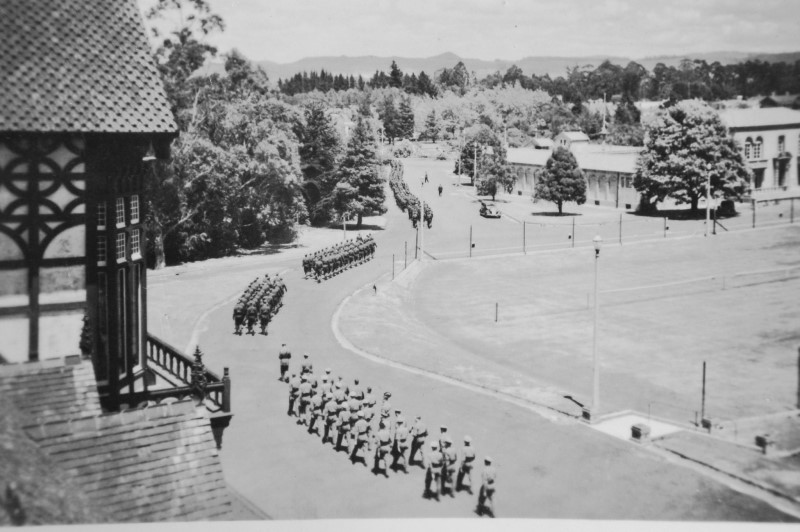
Drill as seen from the tower at Tudor Baths Rotorua.
(Credit: NZBCA Archive)
Recruits relaxing in Rotorua ITW. Instruction was in local halls while accommodation was in the many boarding houses.
(Credit: NZBCA Archive)
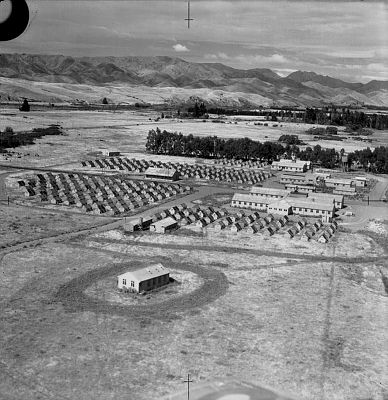
Camp Delta, Omaka (Blenheim). The camp was known for its freezing temperatures in winter and mud and mosquitoes in summer.
(Credit: NZBCA Archive)
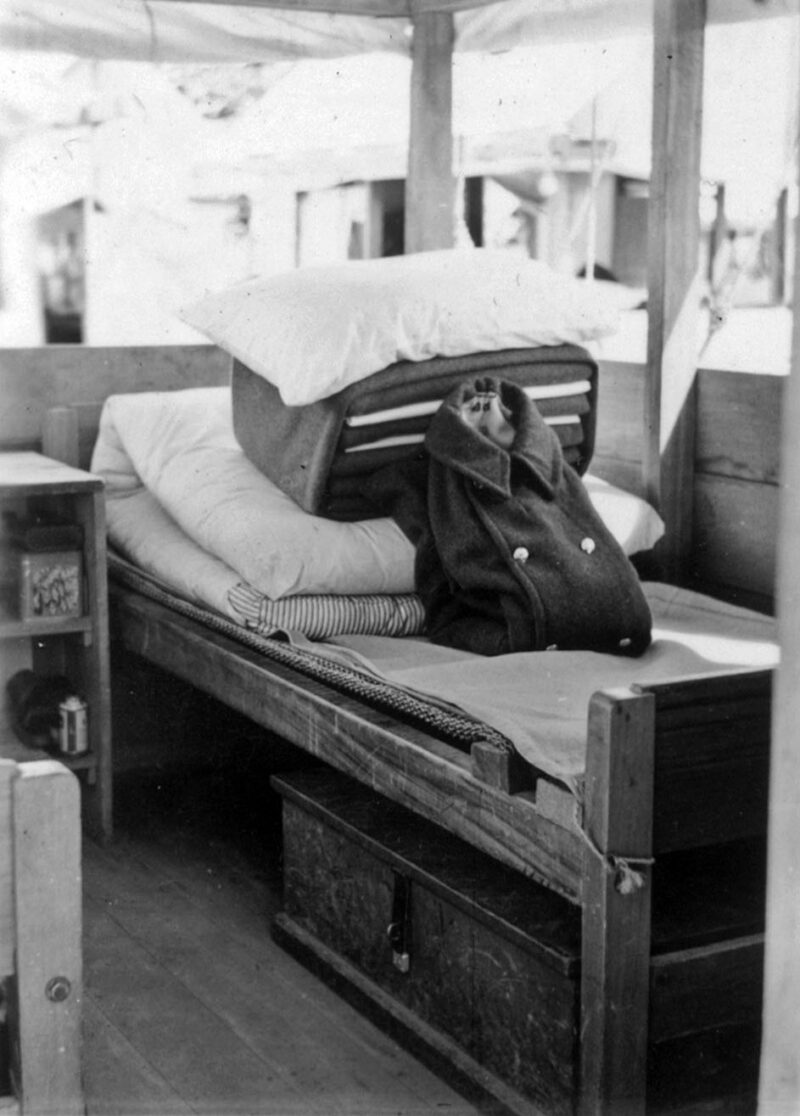
Discipline was all part of the training. Ready for kit inspection.
(Credit: NZBCA Archive)
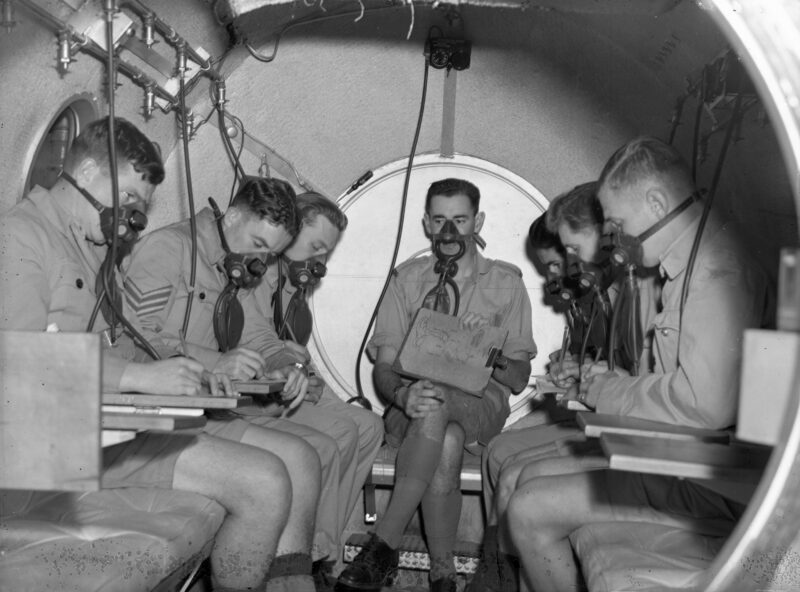
Testing for altitude sickness. In the early years aircrew sent to Canada for training had no flying experience which meant those arriving in Canada who experienced air sickness had to be shipped back to NZ. This later became part of initial training in New Zealand.
(Credit: NZBCA Archive)
March 10, 2025
